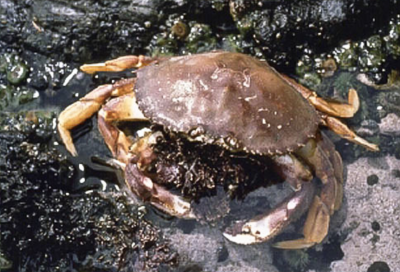Salmon skin, heads, bones and other body parts have long been popular in cultural usages around the world. Now add salmon sperm to the list of desirable byproducts being hailed by specialists in two diverse realms of research.
A team of Japanese researchers is calling dried salmon sperm a miracle product for its ability to extract rare earth elements from ore.
An ore is a type of rock that contains minerals with important elements and metals that can be extracted from the earth through mining. The rocks are refined, usually by smelting, to extract the valuable compounds. Retrieving the REEs involves an expensive process that uses toxic and sometimes radioactive chemicals which often end up polluting the environment.
To the rescue: salmon sperm! The Japanese scientists discovered that salmon sperm has phosphate in its DNA. Previous studies showed that phosphate on the surface of some bacteria extracted rare earth elements from ores.
To test the idea, the researchers poured dried salmon milt into a beaker containing liquid ore waste. The semen did indeed absorb several rare elements from the solution, which were easily extracted using a centrifuge. The process was accomplished 10 times more efficiently than the more hazardous and costly conventional methods.
The scientists claim salmon sperm could someday replace the toxic brew of chemicals currently used to extract REEs. But before it can be used for extraction on a commercial scale, the researchers said an economically viable process would have to be put in place to capture it from commercial fisheries. The team noted that in its dried form, salmon sperm is very easily stored.
Salmon sperm also is the first bio-material used to help turn on the lights. LEDs brighten the numbers in digital clocks and every kind of appliance and electronics. Scientists recently discovered that LEDs can be intensified by using biological materials – notably, salmon sperm.
It is the unique shape of the salmon DNA that produces the bio-magic, said Dr. Andrew Steckl, a photonics expert at the University of Cincinnati.
“The salmon’s double helix has some interesting properties regarding light. Because of the way it is shaped, you can insert light emitting molecules within it that operate more efficiently than in other host materials,” Steckl said in a phone interview.
Steckl’s studies, in collaboration with U.S. Air Force researchers, used sperm taken from wild salmon in Japan, where it is widely harvested for its DNA. In Steckl’s lab, researchers refined the DNA molecules into pure fibers, then into thin films of tightly controlled dimensions that produce light.
“Starting with this material, you can actually make a competitive, if not a superior device,” he said, adding, “People in the semi-conductor and in flat panel display industries are quite concerned that certain specialty metals that are critical to device fabrication are going to begin to run out. And this is not 100 years from
Steckl said bioorganic materials are abundant and readily available, and reduce the need for heavy metals and other hazardous materials.
“We have the biggest and most competitive industries in America in agriculture and fishing, producing huge amounts of biomaterials that have many technologically important qualities — electronic, optical, structural, magnetic and more,” he said.
Steckl believes the trend towards ‘biomimetics’ is inevitable.
“Mother Nature’s bounty is widely available and renewable,” he said. “We can use the naturally occurring molecules as a model to learn how they operate. They’ve had millions of years of refining their operations. If we understand how they operate, maybe we can mimic them using man-made materials. We are just scratching the surface.”







